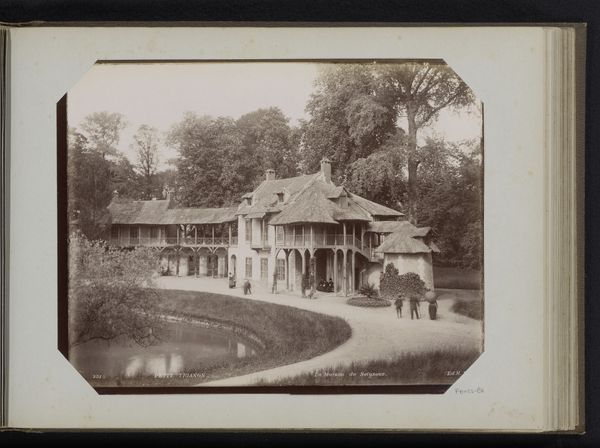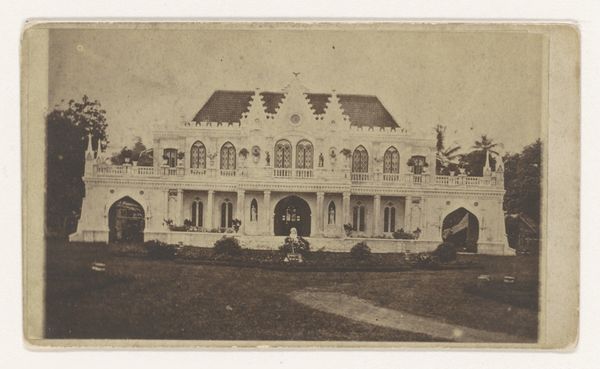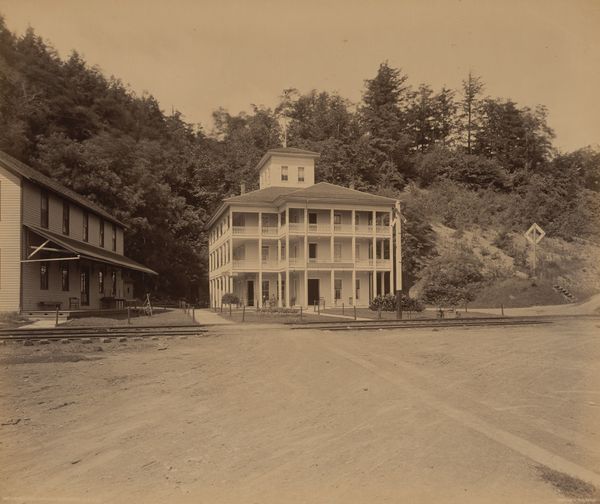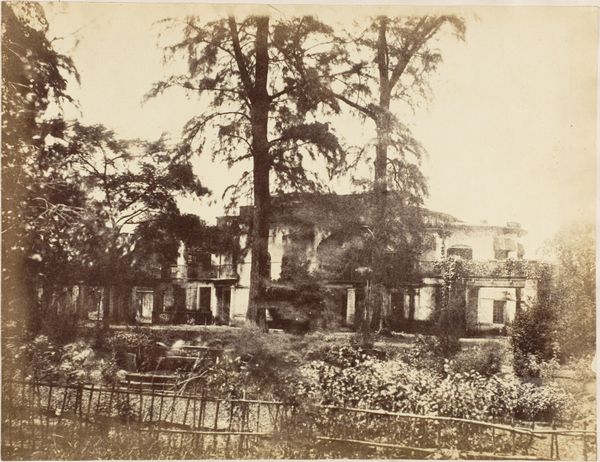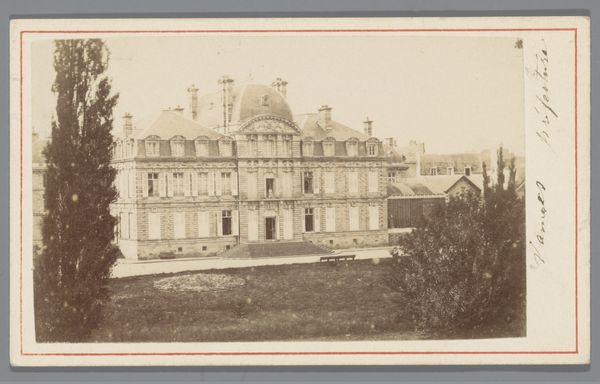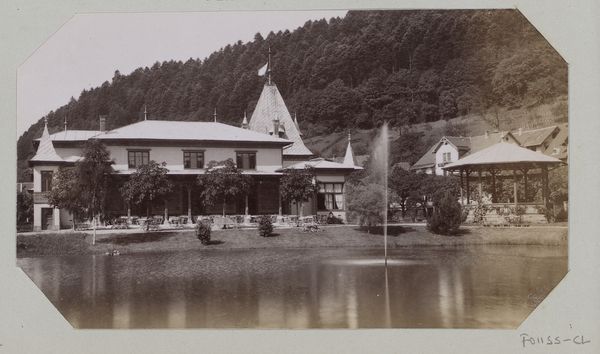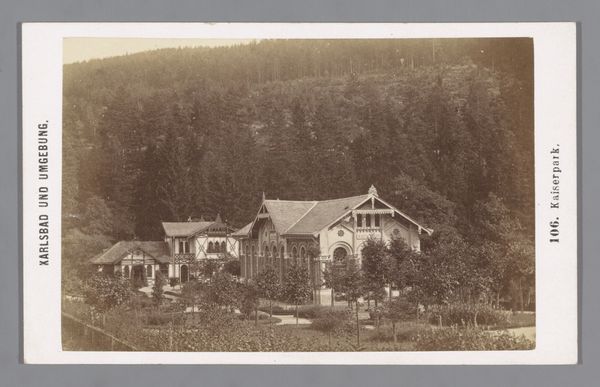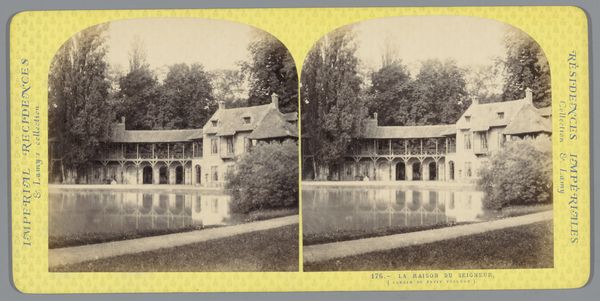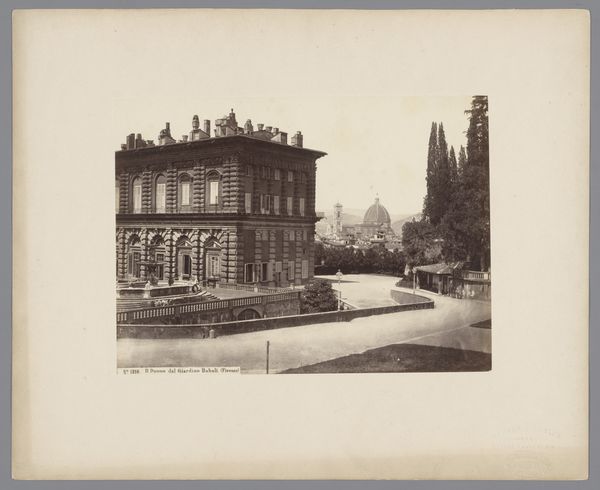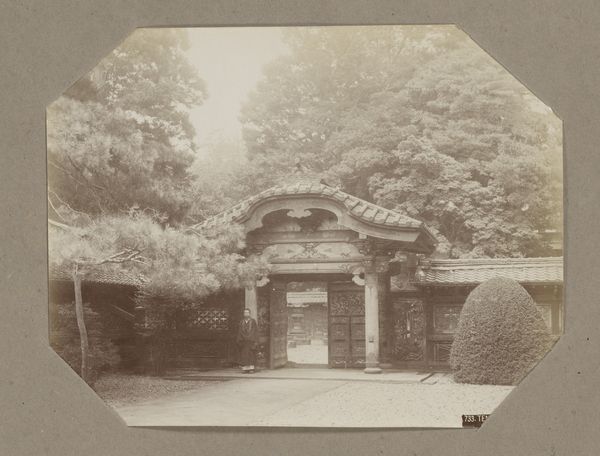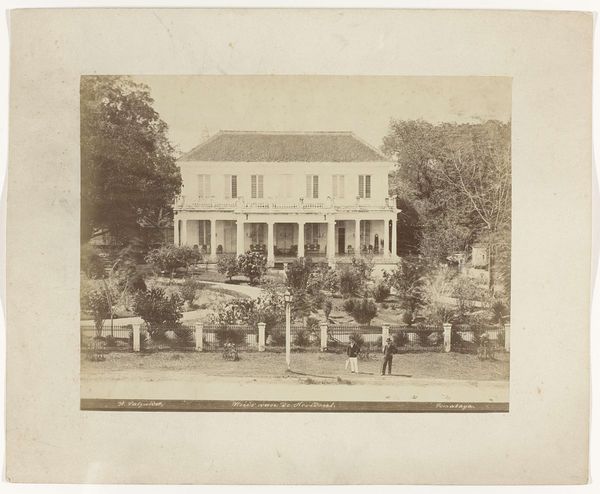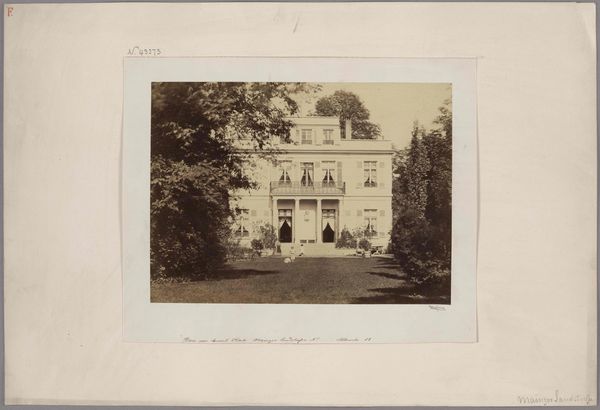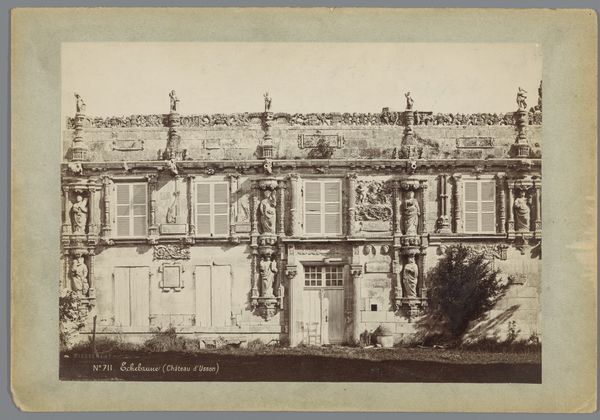
photography, albumen-print
#
16_19th-century
#
landscape
#
photography
#
orientalism
#
cityscape
#
albumen-print
#
realism
Dimensions: height 59 mm, width 89 mm, height 64 mm, width 104 mm
Copyright: Rijks Museum: Open Domain
Editor: This albumen print by František Fridrich, titled *Gezicht op een koffiehuis in Karlovy Vary, Tsjechië*, capturing a coffee house in Karlovy Vary, Czechia sometime between 1856 and 1892... it has such a bustling but almost ghostly feel, due to the long exposure. How do you interpret this work in terms of its historical context? Curator: That ghostly ambiance is precisely what speaks to me. It invites reflection on how photographic images, like this one, shaped and were shaped by evolving notions of public space and leisure in 19th-century Europe. Karlovy Vary was, of course, a famed spa town. This photograph, circulating perhaps as a souvenir, participates in constructing and marketing a specific, idealized vision of that experience. Who was invited into this public space? Who could afford such leisure? Editor: That's a great point, it definitely seems to promote an upper-class lifestyle. Does the fact that it's a photograph change how we view that idealized version? Curator: Absolutely. Photography, unlike painting, had a claim to objective truth, even though it’s just as constructed. It lent a veneer of reality to the staged presentation of bourgeois leisure. Notice how the architecture is carefully framed, presented almost like a stage set. What is the message this image seeks to send? Editor: It seems like it's trying to project a scene of comfortable sociability and cultural refinement. The people look elegant, enjoying the architecture and the ambiance of this salon. But what isn't shown is just as important. Curator: Precisely. The absent perspectives, the excluded populations, become powerful signifiers of the photograph’s role in reinforcing social hierarchies. By critically examining this "realistic" portrayal, we can understand how images can uphold specific societal values. Does that impact how you now see the image? Editor: It does! It definitely changes my perspective from merely seeing it as an interesting historical photograph to thinking more deeply about its underlying social message. Thanks for that! Curator: And thank you. It’s in that interplay between observation and interpretation that we start to really understand the potent relationship between art and the public sphere.
Comments
No comments
Be the first to comment and join the conversation on the ultimate creative platform.
